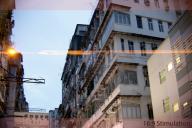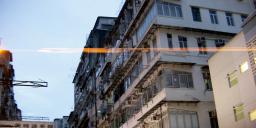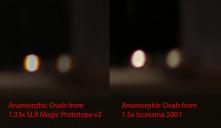
It allows to keep PV going, with more focus towards AI, but keeping be one of the few truly independent places.
-
Certainly not very knowledgeable about anamorphic, but would like to get into it. I like the options you listed today. (if I understand correction you affix it directly to the front of the lens, with no need for rails etc?). I don't see any downsides to the 2nd solution as it seems more flexible, but maybe more expensive??
-
@Brian202020 that makes 2 of us here with a celluloid background. I bought the GH1 and GH2 for fun to use with my legacy glass, but, have found with it can be a serious tool for the right customers too.
-
The focus can work from 2.8m to infinity at f2.8 with decent IQ. Shooting closer than would require expensive and hard to find anamorphic diopters.
The last time I used an anamorphic lens professionally (Panavision Primo) we used regular common spherical diopters (aka: "close up" filter).
Min. focus of 2.8m is a bit far away, but, high minimum focus was common with older anamorphics. People will ask 'whats the minimum focus with my f1.4 lens wide open?'
Solution 2: I am not sure if I understand the working procedure. Can I use the anamorphic adapter (AA) set to "normal", and just focus on the taking lens? Down to 2.8 meters and then and only then engage the AA macro mode? Or do I have to adjust focus on both lenses at the same time?
-
@tosvus Many good anamorphic require the setting up of rails due to the weight of the Anamorphic lens. However, we designed ours so that the weight and size is manageable for "run and gun" and does not require the use of rails.
@B3Guy 2x has much more pronounced anamorphic ovals. The first prototype we made had ovals but it was due to anamorphic mumps side effect. It was not practical due to uneven stretch across the frame. Our 1.33x lens has the anamorphic streaks. You get the full resolution at 2.35:1 ratio from 16:9 HD recording when you use 1.33x and due to this prices are very high for 1.33x and 1.3x anamorphic lenses on lets say eBay.
Large Diopters are very hard to find. Diopters with power of less than +1 is as hard to find as large diopters. Good achromat or double element diopters are even harder to find. We think adding the macro mode function to our Anamorphic adapter is a more convenient solution to interchanging diopters for closer focus distances. However, if you want to get to focus distance such as 0.5m then you really need to use good diopters.
@CFreak We have tried our anamorphic with the SLR Magic HyperPrime 23mm F1.7 and SLR Magic 35mm T1.4 Ver II and we think the best optical quality is at T2.8. We tried using the lens at faster speeds and performance is compromised when at infinity. Some may find it usable for closer distances (it really is) but milage may vary from person to person so T2.8 is a safe specification.
When set to normal mode, you can focus with your taking lens from 2.8m to infinity (Most legacy anamorphics with fixed focus works from 4m to infinity only). When shooting less than 2.8m you will not get any usable image. This is when the macro mode should be used. It is quite easy to use. For example, when you focus down to 1m on the taking lens you also set the anamorphic at 1m under macro mode. I guess yes, you need to focus on both lenses at the same time in macro mode only. The image quality is comparable to using diopters. Actually, I think it is better than using diopters unless you use very high end diopters.
A normal Dual Focus anamorphic adapter has focus scales till 30-50 feet and from 30-50 feet you still need to work on Dual focus so our adapter is a single focus adapter by the taking lens similar to how you would use the LA7200 anamorphic adapter but with macro mode.
-
Someone sent us a question regarding use of the adapter on Canon 5D mk II and 7D cameras.
I took a random test with the Canon 50mm f/1.4 @ f/2.8 with our Anamorphic adapter and the Full Frame 1Ds mk II which also has a full frame sensor. I cut off the top and bottom to stimulate 16:9 HD recording mode. I then compress the height and resize the image for full resolution 2.35:1 anamorphic ratio. Our anamorphic was designed with a larger than mFT sensor coverage for better IQ but so happen it is compatible with the Canon 50mm f/1.4 EF lens. The IQ is not as good as it would be on mFT sensor but it does cover Full Frame sensor with a 50mm taking lens with no vignetting. The 1Ds mk II is not quite a 5D mk II but has similar sensor size.
The flare is quite pronounced since this prototype does not have any lens coating yet. The shop to the left has a lot of strong light source so it is good to bring out the anamorphic streaks. Usually one strong light source brings out one streak so with multiple light sources there will be multiple streaks.
When I have time, I will show a comparison using the Iscorama 42 and the Iscorama 2001 on the Canon EOS M with EF mount which has similar sensor size to the 7D and C300 cameras.

 HD Sitmulation from FF_2.jpg1920 x 1280 - 823K
HD Sitmulation from FF_2.jpg1920 x 1280 - 823K
 Final Anamorphic_2.jpg2553 x 1080 - 1M
Final Anamorphic_2.jpg2553 x 1080 - 1M
 HD Sitmulation from FF.jpg1980 x 1320 - 635K
HD Sitmulation from FF.jpg1980 x 1320 - 635K
 Final Anamorphic.jpg2553 x 1080 - 1009K
Final Anamorphic.jpg2553 x 1080 - 1009K -
@plasmasmp as it is really early on with our R&D we only have one prototype. We did post earlier asking if there is anyone that happen to be in Hong Kong. That way, we can try it locally. We know some PV members in Hong Kong but they do not shoot anamorphic.
-
We received msgs from some that are concerned about the 1.5x anamorphic "look" would be much better. 1.5x from a 16:9 HD image would require cropping from both sizes after the image is desqueezed to get 2:35:1. You loose resolution and takes more time during post processing as well.
1.5x does have a stronger anamorphic oval effect but we wanted to make an anamorphic solution that is made for 16:9 HD recording format that comes with almost all cameras today. Only 1.33x will maintain the full resolution in the final anamorphic output image.
We did an anamorphic oval comparison so people can see what the difference is between a 1.33x anamorphic oval and a 1.5x anamorphic oval. The difference is not significant even when put side-to-side.

 anamorphic ovals.jpg1042 x 603 - 52K
anamorphic ovals.jpg1042 x 603 - 52K -
@slrmagic great, I understood the macro mode of your planned AA option 2 correctly. It's a great design to avoid using diopters.
I would strongly suggest you set the AA up to be able to focus to infinity at wide apertures (f1.4 and wider) for people shooting in low light at night (as most low budget films have to). a 2.8 is not always possible for a wide shot of a cityscape at night (available light).
In the sample of the 1.33x oval ("anamorphic mump") there is significant chromatic aberration, I hope it's just because it's only a prototype.
Otherwise it looks decent so far.
-
@CFreak I mentioned before the AA performs best for the entire focal range at f/2.8. At faster speeds, there is slight drop in contrast and sharpness and if the image is usable depends on opinion.
CA would improve when coating is added to the glass. Streaks would also be reduced when coating is added.
Another possible difference in the CA is due to using different taking lens. The 1.33x sample was taken with the Canon 50mm f/1.4 EF and the 1.5x was an Iscorama 2001 50mm f/1.8.
-
It's funny, I have just recently discovered the beauty of anamorphic shooting, and have been looking all over for alternatives, and turns my favorite lens company is making one! Is there a projected msrp for the lens still? If you're looking for novice anamorphic testers in sweden, I'm your man!
-
We are glad to know we are your favorite lens company.
The target MSRP is 1.5K for this modern anamorphic adapter lens (non adapter solution would cost more) which comes with service option that is not avaliable from legacy anamorphics. IQ is also guranteed since you are buying it as a new unit and not a used unit. We bought 10 mint condition used units and only 3/10 works. Most are not calibrated properly even when in mint condition. We are sure many who gave up on their anamorphics endeavour due to inability to achieve a good image was due to buying a dud. Does not sound very professional but it is from our true experience.
We will be looking for anamorphic adapter volunteers when the project is more solid. We are still working on improving the design. As our current design works well with the optical design of the 35mm T1.4 CINE II mFT mount, that supports repeatable focus and additional weight of anamorphic lenses, we will make offers to those customers first for some sample footages. Due to pairing involved (which is quite common) the anamorphic does not work will all lenses and we do not want to have users buying an anamorphic that would vignette with their lens.
-
When set to normal mode, you can focus with your taking lens from 2.8m to infinity (Most legacy anamorphics with fixed focus works from 4m to infinity only). When shooting less than 2.8m you will not get any usable image. This is when the macro mode should be used. It is quite easy to use. For example, when you focus down to 1m on the taking lens you also set the anamorphic at 1m under macro mode. I guess yes, you need to focus on both lenses at the same time in macro mode only.
It is interesting how you have described this, can you tell me what is the difference between your unit and a dual focus adapter which can focus anywhere down to 1.0 metre and therefore also focus at the hyperfocal distance? Also what is the longest focal length and biggest fstop that can be used.
-
Typical Ducal focus can focus close but when focusing towards infinity you have infinite positions to perform dual focus till you reach infinity. When focusing at hyperfocal distance the taking lens is typically at f/5.6 or smaller.
We only tried using the SLR Magic HyperPrime 23mm F1.7 and SLR Magic 35mm T1.4 CINE II with our anamorphic prototype v2 at f/2.8 We tried 1.4 and 1.7 aperture and decided it is better to rate the anamorphic adapter at f/2.8. It is possible some may find the extreme apertures usable though.
-
The anamorphic prototype does not work with any of our current lenses without compromise (such as hollowed out vignetting. The anamorphic adapter requires to be paired with its supported list of lenses. We will have a list of SLR Magic lenses that support our anamorphic adapter prototype. It may work with other lenses outside of our product line but we cannot guarantee best IQ performance and compatibility.
Due to large optical elements the HyperPrime 35mm T0.95 requires a large anamorphic adapter which costs out of our target price range of 1.5K for the first Anamorphic adapter. A larger anamorphic adapter is much heavier in weight and may require support rails. Our first anamorphic adapter is planned to have a suitable weight for run and gun.
The 35mm T1.4 CINE II is a mechanically modified version of the 35mm T1.4 CINE to support our anamorphic prototype.
-
I am definitely more interested in a 1.33x version, due to the better gain in resolution it gives. For that matter, is 1.35x off the table now, since that does maintain the fullest resolution?
-
1.35x is no longer under consideration now. We looked into external monitors for cameras and noticed 1.33x, 1.5x, and 2x are common default de-squeeze options. We therefore choose 1.33x over the other options.
-
my first comment here: I think the latest breakthrought magic lantern did is a train you definitly should hop on! I personally wait for a decent priced anamorphic lens for so long. the option of raw recording makes this wish to a need cause it makes for the first time sense for me (and for all the oders ..) to really think about cinematorgraphy!!! so which lens? it definitly should work on on 5dmarkIII ... if you look at the possible resolutions there would make sense a 1.5x (or 1.33) ... and what I saw on you test footage: that looked better than all that iscorama (etc.) solutions ... I definitly would prefere no lens - attachments! that's my point of view ... don't know if I'm up to date concerning the direction you are developing now!
-
@ed_lee83 can you PM your contact info to us? thx!
-
have you considered "faking" the look by starting with some of your existing prime lenses? I've been hoping someone would do this for some time, but nobody has yet. I'm pretty confident that it is possible to make an oval aperture unit (that is, a functioning aperture that is oval and maintains an oval shape as it is stopped down). The only thing that would even need modification is the part of the assembly that dictates where each blade is located at any given position of the aperture ring.
You have the perfect lenses for this in your f0.95 units. They are already extremely fast lenses, so "stopping down" half of the blades (the side blades to achieve oval shape), would still yield a very fast lens wide open. Dog Schidt Optics has already proven that an internal oval aperture produces an anamorphic bokeh look, but their apertures are non-adjustable drop-in fixed size disks, rather than working aperture assemblies.
To complete the look, if people want flares, the stuff I've seen from Optefex/Schneider in terms of their blue streak filters looks very good. The other advantage of flares via filter is that if you don't want flares, you simply remove the filter.
The only thing that people would not get with this type of "fake" anamorphic lens is the (debatable) resolution advantage. If you truly want resolution advantage from an anamorphic, you must use the full image without cropping. Ideally (on 16:9), this means a 1.33X lens. But all of the 1.33X lenses currently available have major CA/resolution problems, which defeats the point anyway.
I don't really know how difficult it would be to test this out, but the advantage is you can do it with an existing lens and probably only have to fiddle with modifying a few parts in the aperture assembly. I think you might be pleasantly surprised at the results.
-
You are quite bang on with the direction we plan to head. So that more people can experience the taste of a modern anamorphic lens, an anamorphic adapter would be the best solution. For further development, we will look into anamorphic lens solutions.
We have received a lot of emails from Canon filmmakers after posing anamorphic images from a FF Canon with out anamorphic adapter designed for our 35mm T1.4 CINE II lens. The adapter would be a good point to start to find out which users are the most interested in using our anamorphic lenses and in what focal length. After we have those stats, we will have a better idea what makes a good set of anamorphic lenses that are non lens attachment solutions.
We do have a very popular lens for the E-mount system that features an Anamorphic Ovals mode.
http://www.dpreview.com/news/2012/03/05/SLR-Magic-Toy-Lenses-Q-mount-E-mount-Micro-Four-Thirds-mount
It has a non-adjustable aperture. The shapes offer a very creative look. However, the anamorphic ovals from feedback we received was not that popular compared to hearts, stars, and circle shape. We have received a lot of feedback to add the anamorphic shape but it seems what is wanted is anamorphic flare, anamorphic distortion, and added resolution benefits.
Considering most prosumer grade cameras offer HD in 16:9 ratio it means 1.33x is the ideal ratio for full resolution without cropping. Currently available 1.33x lenses are seen to have major CA/resolution problems because they are used beyond the designed image coverage. Another reason is we noticed buying a used mint condition anamorphic does not mean it is calibrated/optically aligned properly and the user can only expect a downgrade in resolution instead.
We did have an idea of an oval aperture that is adjustable after the Anamorphic oval option in the Bokehmorphic lens was not as desirable as we thought but finally decided we wanted to go all out anamorphic for an anamorphic look rather than try to mimic an anamorphic look.
Howdy, Stranger!
It looks like you're new here. If you want to get involved, click one of these buttons!
Categories
- Topics List23,990
- Blog5,725
- General and News1,353
- Hacks and Patches1,153
- ↳ Top Settings33
- ↳ Beginners256
- ↳ Archives402
- ↳ Hacks News and Development56
- Cameras2,367
- ↳ Panasonic995
- ↳ Canon118
- ↳ Sony156
- ↳ Nikon96
- ↳ Pentax and Samsung70
- ↳ Olympus and Fujifilm101
- ↳ Compacts and Camcorders300
- ↳ Smartphones for video97
- ↳ Pro Video Cameras191
- ↳ BlackMagic and other raw cameras116
- Skill1,960
- ↳ Business and distribution66
- ↳ Preparation, scripts and legal38
- ↳ Art149
- ↳ Import, Convert, Exporting291
- ↳ Editors191
- ↳ Effects and stunts115
- ↳ Color grading197
- ↳ Sound and Music280
- ↳ Lighting96
- ↳ Software and storage tips266
- Gear5,420
- ↳ Filters, Adapters, Matte boxes344
- ↳ Lenses1,582
- ↳ Follow focus and gears93
- ↳ Sound499
- ↳ Lighting gear314
- ↳ Camera movement230
- ↳ Gimbals and copters302
- ↳ Rigs and related stuff273
- ↳ Power solutions83
- ↳ Monitors and viewfinders340
- ↳ Tripods and fluid heads139
- ↳ Storage286
- ↳ Computers and studio gear560
- ↳ VR and 3D248
- Showcase1,859
- Marketplace2,834
- Offtopic1,319






